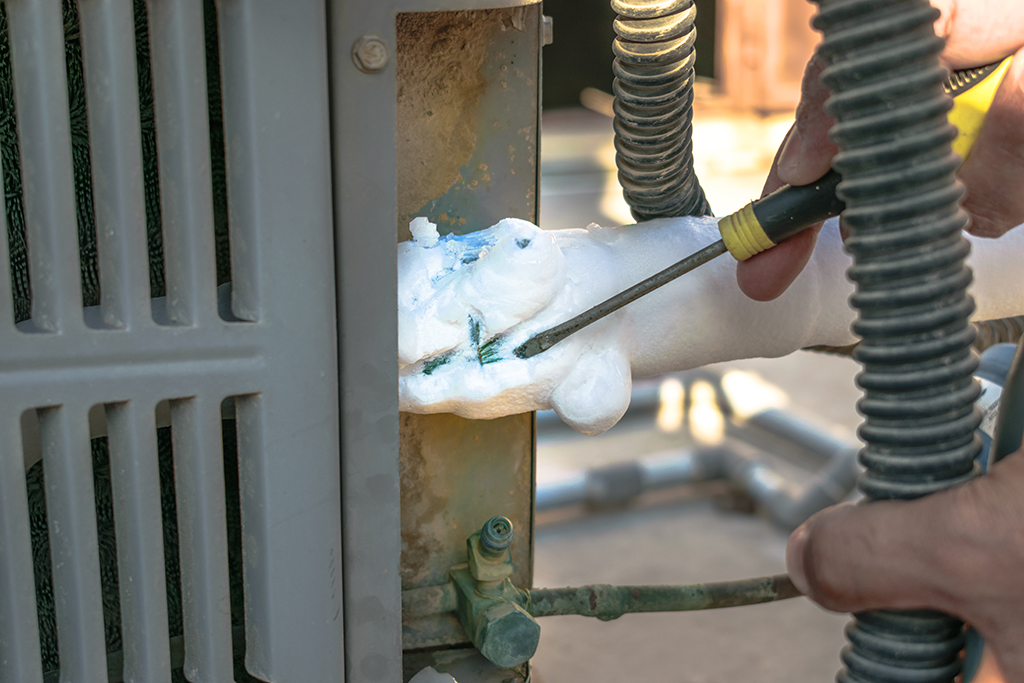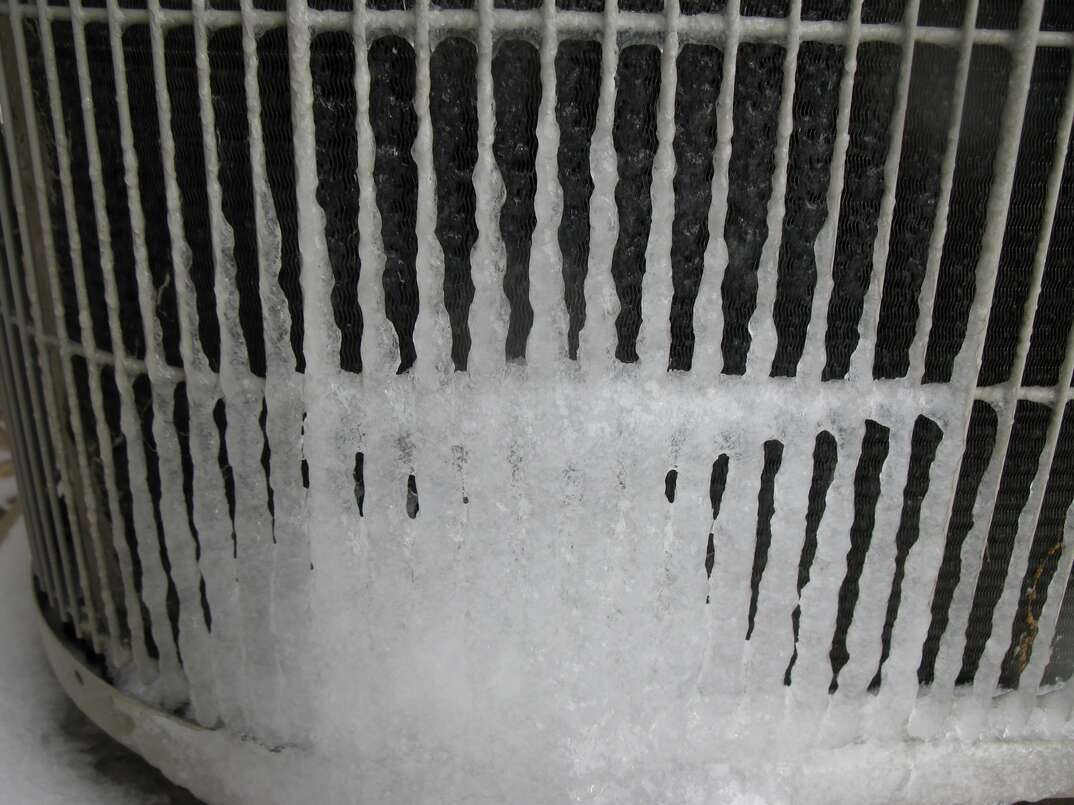Listed here down the page you might get a lot of really good news pertaining to What Do I Do If My AC Pipe Is Frozen.

Introduction
Finding that your air conditioning pipeline is iced up can be worrying, especially during hot summer season when you rely on your a/c the most. Comprehending what to do in such a scenario is crucial to avoid more damages to your air conditioning system and ensure your comfort inside your home.
Recognizing the Causes
Several variables can contribute to the freezing of an a/c pipeline. Understanding these reasons can aid you address the problem efficiently.
Lack of Airflow
One typical cause of an icy AC pipeline is inadequate airflow. When the air movement over the evaporator coil is limited, it can create the coil to go down below freezing temperature level, resulting in ice formation on the pipeline.
Reduced Refrigerant Levels
Insufficient cooling agent degrees in your a/c system can also lead to a frozen pipeline. Reduced refrigerant degrees can trigger the stress in the system to go down, causing the freezing of moisture on the evaporator coil.
Winter Conditions
In chillier climates, freezing temperatures outside can add to the freezing of a/c pipes. If your a/c unit is not effectively insulated or if there are leakages in the ductwork, chilly air can penetrate the system, triggering the pipe to ice up.
Dirty Air Filters
Filthy or stopped up air filters can restrict airflow in your AC system, causing various concerns, consisting of an icy pipeline. It's essential to change or cleanse your air filters frequently to ensure correct airflow and prevent ice build-up.
Indicators of a Frozen Air Conditioning Pipe
Recognizing the indicators of a frozen air conditioning pipeline is vital for prompt activity.
Decreased Airflow
If you observe a considerable reduction in air movement from your vents, it can suggest a frozen pipeline.
Ice Buildup on the Pipe
Visible ice buildup on the cooling agent line or the evaporator coil is a clear sign of an icy air conditioner pipeline.
Odd Sounds from the Unit
Unusual sounds, such as hissing or bubbling, coming from your a/c device can signify that there's ice existing on the pipe.
Immediate Actions to Take
When confronted with an icy a/c pipe, it's important to act rapidly to stop further damages to your cooling system.
Switching off the air conditioning
The primary step is to turn off your air conditioning unit to avoid the system from running and exacerbating the problem.
Checking for Blockages
Examine the area around the interior system for any blockages that might be obstructing airflow, such as furnishings or drapes.
Thawing the Pipe
You can use gentle methods like placing towels soaked in warm water around the icy pipeline to help thaw it slowly.
Preventive Measures
Taking safety nets can help stay clear of future occurrences of a frozen air conditioning pipeline.
When DIY Methods Fail
If your efforts to thaw the pipeline or address various other problems are unsuccessful, it's time to employ a professional.
Relevance of Hiring a Professional HVAC Technician
A licensed HVAC professional has the proficiency and devices essential to detect and fix issues with your AC system securely and successfully.
Routine Maintenance Checks
Schedule regular maintenance contact a specialist HVAC professional to make sure that your a/c system is running successfully.
Altering Air Filters
Frequently replace or cleanse your air filters to stop air flow limitations and preserve ideal performance.
Protecting Exposed Pipes
If your air conditioning pipes are exposed to cold temperatures, think about protecting them to prevent freezing throughout cold weather.
Seeking Professional Help
If DIY methods fail to fix the concern or if you're uncertain regarding how to continue, it's finest to seek assistance from a certified HVAC service technician.
Conclusion
Managing a frozen AC pipe can be an aggravating experience, but recognizing exactly how to respond can aid reduce damages and restore comfort to your home. By understanding the causes, identifying the signs, and taking punctual action, you can properly address the concern and avoid future incidents.
Frozen AC Line: Why It Happens & What To Do About It
A frozen AC line can be a rather peculiar sight in a place like Phoenix, Arizona where nothing ever freezes. In this post, we’ll discuss what makes an air conditioner line frozen – and what you can do about it.
Dirty Air Filters
Did you know that you should be cleaning or replacing your air filters on a monthly basis? Failing to do this can result in airflow issues that, in turn, cause your evaporator coils and lines to freeze over. You’ll notice a buildup of ice on both components, although the buildup on your pipes will, of course, be more evident unless you open your air condition up to reveal the coils.
What To Do About It
Give your air filter a good cleaning if it’s reusable. If not, replace the filter outright. Next, switch your air conditioner’s fan setting on and leave it there for 2-3 hours. This will draw warm air in, helping to thaw your evaporator coil. You can also check out this article for some tips on cleaning the coils themselves if you’d like to speed the process up. Before you switch the unit back to its normal state, make sure the supply vents are completely unobstructed and free of dust or other debris.
If you keep having this issue even after replacing your filters regularly, contact a local HVAC repair company and have them inspect your evaporator coil, ductwork, and any other components that may be at fault. If you live in the Phoenix, Arizona area, give American Home Water and Air a call.
Low Refrigerant Levels/Leakage
What To Do About It
Contrary to what air conditioner “recharge” companies often tell their clients about refrigerant, it should never need to be simply refilled. You see, refrigerant runs in what experts refer to as a “closed loop.” Refrigerant really shouldn’t be leaving that loop. If it is, you’ve got a leak.
Paying someone to come and pump more refrigerant into your system (aka “recharge” it) isn’t the solution. Doing that will simply kick the can down the road. Besides, refrigerant leaks can be harmful to the environment and people in your home.
Rather, you need to take care of the leak with the help of a technician. Check out this article for some more information about dealing with air conditioners that are leaking refrigerant. Before you contact a technician, switch your thermostat to the off position. Then, switch the fan setting on and let it run for 2-3 hours so the unit can thaw.
Improper Temperature Setting
Improper temperature settings can also cause a drop in your air conditioner’s pressure. What many people don’t realize is that air conditioners are actually designed to run when temperatures have fallen above roughly 60 degrees Fahrenheit. If you run the unit when it’s cold outside, you’ll run into many issues, including frozen components.

We had been guided to that editorial on Have a Frozen AC Line? Here’s How to Fix It from a friend on our other blog. Liked our article? Please share it. Help other people check it out. Thanks a lot for your time. Please check our website back soon.
Schedule Today!